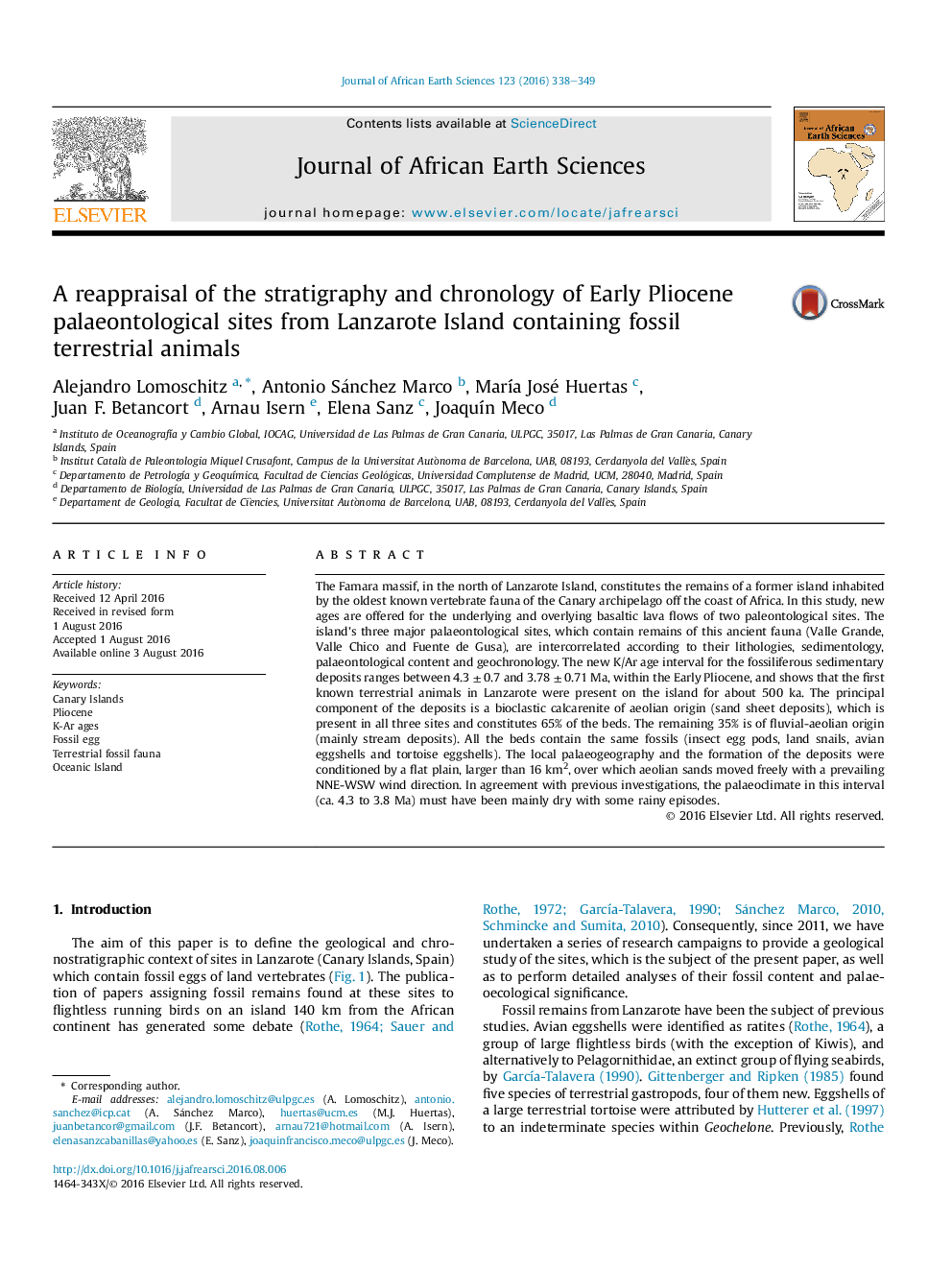| کد مقاله | کد نشریه | سال انتشار | مقاله انگلیسی | نسخه تمام متن |
|---|---|---|---|---|
| 4728186 | 1640185 | 2016 | 12 صفحه PDF | دانلود رایگان |
• Lanzarote Island was inhabited by large terrestrial animals in the Early Pliocene.
• The landscape consisted of a flat plain over which aeolian sands moved freely.
• Sedimentary beds have insect egg pods, land snails, avian and tortoise eggshells.
• Three major sites are correlated according to their sedimentology and geochronology.
• The new K/Ar age interval ranges between 4.3 Ma and 3.8 Ma.
The Famara massif, in the north of Lanzarote Island, constitutes the remains of a former island inhabited by the oldest known vertebrate fauna of the Canary archipelago off the coast of Africa. In this study, new ages are offered for the underlying and overlying basaltic lava flows of two paleontological sites. The island's three major palaeontological sites, which contain remains of this ancient fauna (Valle Grande, Valle Chico and Fuente de Gusa), are intercorrelated according to their lithologies, sedimentology, palaeontological content and geochronology. The new K/Ar age interval for the fossiliferous sedimentary deposits ranges between 4.3 ± 0.7 and 3.78 ± 0.71 Ma, within the Early Pliocene, and shows that the first known terrestrial animals in Lanzarote were present on the island for about 500 ka. The principal component of the deposits is a bioclastic calcarenite of aeolian origin (sand sheet deposits), which is present in all three sites and constitutes 65% of the beds. The remaining 35% is of fluvial-aeolian origin (mainly stream deposits). All the beds contain the same fossils (insect egg pods, land snails, avian eggshells and tortoise eggshells). The local palaeogeography and the formation of the deposits were conditioned by a flat plain, larger than 16 km2, over which aeolian sands moved freely with a prevailing NNE-WSW wind direction. In agreement with previous investigations, the palaeoclimate in this interval (ca. 4.3 to 3.8 Ma) must have been mainly dry with some rainy episodes.
Journal: Journal of African Earth Sciences - Volume 123, November 2016, Pages 338–349
